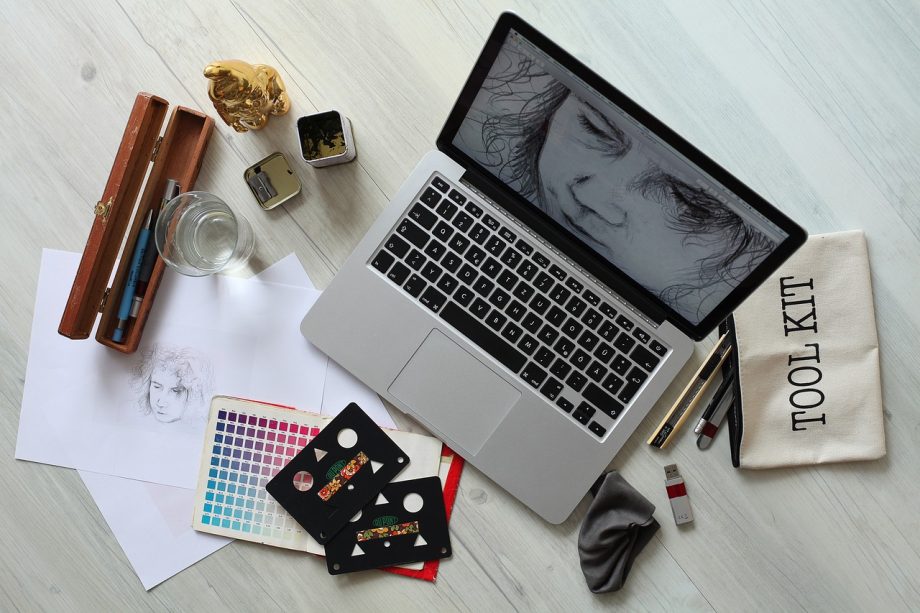Digital Design and Prototyping
The fashion industry is experiencing a seismic shift as digital design and prototyping tools revolutionize traditional processes. These cutting-edge technologies are not only streamlining workflows but also unleashing unprecedented levels of creativity and efficiency in fashion design and production.
3D Modeling and CAD Software
3D modeling and Computer-Aided Design (CAD) software have become indispensable tools in the modern fashion designer’s arsenal. These sophisticated programs allow designers to create intricate, highly detailed digital representations of garments, accessories, and even entire collections.
Key benefits of 3D modeling and CAD in fashion design include:
- Reduced Time-to-Market: Digital designs can be created, modified, and finalized much faster than traditional sketching and pattern-making methods.
- Enhanced Precision: CAD software enables designers to create patterns with pinpoint accuracy, reducing errors in production.
- Improved Collaboration: Digital files can be easily shared and modified by team members across different locations.
- Cost Reduction: By minimizing the need for physical prototypes, companies can significantly reduce material waste and associated costs.
- Increased Creativity: 3D modeling tools allow designers to experiment with complex designs and textures that might be challenging to conceptualize on paper.
- Sustainability: Digital design processes reduce the need for physical samples, contributing to more sustainable practices in the fashion industry.
Popular CAD software in the fashion industry includes CLO3D, Browzwear, and Marvelous Designer. These tools have become so advanced that they can simulate fabric draping, movement, and even lighting effects with remarkable accuracy.
Virtual Prototyping
Virtual prototyping has emerged as a game-changer in fashion design and production. This technology allows designers to create digital samples of garments, eliminating the need for multiple physical prototypes and significantly reducing the time and resources required to bring a design from concept to production.
| Aspect | Traditional Prototyping | Virtual Prototyping |
|---|---|---|
| Time | Weeks to months | Hours to days |
| Cost | High (materials, labor) | Low (software licenses) |
| Iterations | Limited by time and budget | Unlimited |
| Sustainability | Material-intensive | Minimal environmental impact |
| Collaboration | Challenging across locations | Easy global collaboration |
| Customization | Time-consuming and costly | Quick and cost-effective |
Virtual prototyping offers several advantages:
- Rapid Iteration: Designers can quickly make changes and see results in real-time.
- Global Collaboration: Teams can work on the same digital prototype simultaneously, regardless of location.
- Reduced Waste: By eliminating the need for physical samples, virtual prototyping significantly reduces material waste.
- Enhanced Customization: Digital prototypes can be easily adjusted for different sizes, colors, and styles.
- Improved Decision-Making: Stakeholders can visualize and approve designs earlier in the process.
Companies like Tommy Hilfiger have embraced virtual prototyping, reporting a 50% reduction in sample production and a 20% decrease in time-to-market for new collections.
Smart Textiles and Wearable Technology
The convergence of fashion and technology has given rise to smart textiles and wearable technology, ushering in a new era of functional and interactive clothing. These innovations are not just changing what we wear, but how our clothes interact with us and our environment.
E-Textiles and Embedded Electronics
E-textiles, also known as electronic textiles, are fabrics that incorporate digital components and electronics directly into their structure. These advanced materials are paving the way for clothing that can sense, react, and even communicate.
Examples of smart clothing applications include:
- Health Monitoring: Garments with embedded sensors to track vital signs, posture, and stress levels.
- Fitness Tracking: Athletic wear that monitors performance metrics like heart rate, speed, and calorie burn.
- Temperature Regulation: Clothing that adjusts to ambient temperature, providing heating or cooling as needed.
- Interactive Fashion: Garments with LED displays or color-changing capabilities for aesthetic or communication purposes.
- Safety Wear: Workwear with integrated sensors to detect hazardous conditions or alert for help in emergencies.
The potential of e-textiles extends beyond consumer fashion. For instance, the healthcare industry is exploring smart textiles for patient monitoring and rehabilitation, while the military is developing advanced combat uniforms with integrated communication systems and adaptive camouflage.
Innovations in Fabric Technology
Advancements in material science have led to the development of fabrics with extraordinary properties, enhancing both performance and comfort in clothing.
| Fabric Technology | Key Features | Benefits |
|---|---|---|
| Moisture-Wicking | Draws sweat away from the skin | Keeps wearer dry and comfortable |
| Temperature-Regulating | Adapts to body temperature | Maintains optimal comfort in varying conditions |
| Self-Cleaning | Repels stains and odors | Reduces need for washing, extends garment life |
| UV-Protective | Blocks harmful UV rays | Protects skin from sun damage |
| Antimicrobial | Inhibits growth of bacteria and fungi | Reduces odors, promotes hygiene |
| Shape Memory | Returns to original shape after deformation | Maintains garment appearance, wrinkle-resistant |
These innovative fabrics are not only enhancing the functionality of clothing but also contributing to sustainability efforts in the fashion industry. For example, self-cleaning fabrics reduce water consumption and the use of detergents, while temperature-regulating materials can decrease reliance on energy-intensive heating and cooling systems.
Augmented Reality (AR) and Virtual Reality (VR) in Fashion

Augmented Reality (AR) and Virtual Reality (VR) technologies are transforming the fashion landscape, revolutionizing how consumers interact with brands, shop for clothing, and experience fashion shows. These immersive technologies are bridging the gap between digital and physical retail experiences, offering exciting new possibilities for engagement and sales.
Virtual Fitting Rooms
Virtual fitting rooms powered by AR technology are addressing one of the biggest challenges in online fashion retail: the inability to try on clothes before purchase. This innovative solution allows customers to visualize how garments will look on their bodies without physically wearing them.
Benefits of virtual fitting rooms include:
| Benefit | Description | Impact |
|---|---|---|
| Reduced Returns | More accurate size selection | Up to 36% reduction in return rates |
| Enhanced Customer Experience | Try on multiple items quickly | Increased customer satisfaction and engagement |
| Increased Sales | Boosts customer confidence in purchases | Up to 20% increase in conversion rates |
| Time Efficiency | No need for physical changing rooms | Faster shopping process for customers |
| Expanded Product Range | Try on items not available in-store | Increased product exposure and sales opportunities |
| Data Collection | Insights into customer preferences | Improved inventory management and marketing strategies |
Companies like Warby Parker and Sephora have successfully implemented AR try-on features for glasses and makeup, respectively, seeing significant improvements in customer engagement and sales.
VR Fashion Shows
Virtual Reality is reimagining the traditional fashion show, creating immersive and interactive experiences that transcend physical limitations. VR fashion shows offer designers new creative possibilities and allow brands to reach a global audience without the constraints of physical venues.
Notable VR fashion show examples:
- Balenciaga Fall 2021: A video game-style presentation where avatars wore the new collection.
- London Fashion Week 2020: Featured a fully digital, 3D virtual reality fashion show.
- Tommy Hilfiger’s VR Showroom: Allows buyers to view collections in a virtual environment.
- Chanel’s VR Fitting Room: Enabled VIP customers to try on haute couture pieces virtually.
The impact of VR fashion shows on audience engagement includes:
- Global Accessibility: Anyone with a VR headset can attend, regardless of location.
- Interactive Elements: Viewers can explore collections up close and from multiple angles.
- Sustainability: Reduces the carbon footprint associated with traditional fashion shows.
- Data Collection: Provides valuable insights into viewer preferences and behaviors.
- Extended Lifespan: VR shows can be experienced long after the event, extending their impact.
As VR technology continues to evolve, we can expect even more innovative and immersive fashion experiences that blur the lines between physical and digital realities.
Artificial Intelligence (AI) and Machine Learning (ML)
Artificial Intelligence (AI) and Machine Learning (ML) are revolutionizing the fashion industry, optimizing processes from design to retail. These technologies are enhancing creativity, improving efficiency, and delivering personalized experiences to consumers.
AI in Fashion Design
AI is increasingly being used in fashion design to predict trends, generate new designs, and assist designers in the creative process. This technology is not replacing human creativity but augmenting it, allowing designers to explore new possibilities and respond more quickly to market demands.
AI tools and platforms used in fashion design include:
- Adobe Sensei: Uses AI to analyze trends and generate design suggestions.
- Google’s Project Muze: An AI experiment in fashion design based on color, texture, and style preferences.
- IBM Watson: Analyzes social media and runway images to predict upcoming fashion trends.
- Stitch Fix’s Hybrid Design: Combines human designers with AI to create new styles.
- Vue.ai: Offers AI-powered fashion design and visual merchandising tools.
- Zalando’s Project Muze: Creates personalized designs based on a customer’s interests and preferences.
These AI-powered tools are helping designers:
- Predict upcoming trends with greater accuracy
- Generate unique pattern and color combinations
- Optimize designs for specific target markets
- Reduce time spent on repetitive tasks, allowing more focus on creativity
Personalized Shopping Experiences
AI and ML are transforming the online shopping experience by creating highly personalized recommendations and interactions for consumers. These technologies analyze vast amounts of data to understand individual preferences, behaviors, and purchase history, delivering tailored product suggestions and customized shopping experiences.
| Aspect | Traditional Personalization | AI-Driven Personalization |
|---|---|---|
| Data Sources | Limited (e.g., purchase history) | Comprehensive (browsing behavior, social media, etc.) |
| Accuracy | Moderate | High |
| Real-time Adaptation | Limited | Continuous |
| Scale | Limited by human capacity | Can handle millions of users simultaneously |
| Cross-channel Integration | Challenging | Seamless |
| Predictive Capabilities | Basic | Advanced (can anticipate future needs) |
AI-driven personalization methods include:
- Recommendation Engines: Suggest products based on browsing history, purchases, and similar customer profiles.
- Dynamic Pricing: Adjust prices in real-time based on demand, inventory, and customer behavior.
- Visual Search: Allow customers to find products by uploading images.
- Chatbots and Virtual Assistants: Provide personalized styling advice and customer support.
- Predictive Analytics: Anticipate customer needs and preferences for future product development.
Companies like Stitch Fix and Amazon are at the forefront of AI-driven personalization in fashion retail. Stitch Fix, for example, uses AI to curate personalized clothing boxes for subscribers, continually learning and improving recommendations based on customer feedback.
Sustainable Fashion Technologies
As the fashion industry grapples with its environmental impact, technology is driving sustainability through innovative solutions. From eco-friendly materials to transparent supply chains, these advancements are helping the industry reduce its carbon footprint and move towards more ethical practices.
Eco-Friendly Materials and Processes
The development of sustainable materials and eco-friendly production processes is revolutionizing the fashion industry’s approach to sustainability. Innovative technologies are creating new fabrics and improving manufacturing methods to minimize environmental impact.
Examples of sustainable materials and technologies include:
- Organic Cotton: Grown without harmful pesticides or synthetic fertilizers.
- Recycled Fabrics: Made from post-consumer plastic bottles or discarded textiles.
- Biodegradable Materials: Fabrics that decompose naturally, reducing landfill waste.
- Lab-Grown Leather: Cruelty-free alternatives to traditional leather.
- Algae-Based Fabrics: Sustainable and biodegradable materials made from algae.
- 3D Printing: Reduces waste by creating garments on-demand.
- Waterless Dyeing: Techniques that significantly reduce water usage in the dyeing process.
These sustainable technologies are not only reducing the industry’s environmental impact but also opening up new design possibilities and improving product performance.
Blockchain for Transparency
Blockchain technology is emerging as a powerful tool for enhancing transparency and traceability in the fashion supply chain. By creating an immutable record of each step in a product’s journey, blockchain helps ensure ethical practices and sustainable sourcing.
Benefits of blockchain technology in fashion:
| Benefit | Description | Impact |
|---|---|---|
| Supply Chain Transparency | Tracks product journey from source to consumer | Builds consumer trust and brand integrity |
| Authentication | Verifies the authenticity of luxury goods | Reduces counterfeit products in the market |
| Ethical Sourcing | Ensures compliance with labor and environmental standards | Promotes fair labor practices and sustainability |
| Inventory Management | Provides real-time tracking of stock levels | Reduces overproduction and waste |
| Consumer Engagement | Allows customers to access product history | Enhances brand loyalty through transparency |
| Circular Economy | Facilitates recycling and second-hand market | Promotes sustainable consumption patterns |
Companies like Provenance are pioneering the use of blockchain in fashion, helping brands like Martine Jarlgaard London to provide complete transparency of their supply chain to consumers.
The integration of blockchain technology in fashion is still in its early stages, but its potential to revolutionize supply chain management and promote sustainable practices is significant. As more brands adopt this technology, we can expect to see increased transparency, reduced counterfeiting, and improved sustainability across the industry.
In conclusion, technology is profoundly reshaping the fashion industry, from the way clothes are designed and produced to how they are marketed and sold. Digital design tools, smart textiles, AR/VR experiences, AI-driven personalization, and blockchain-enabled transparency are just a few of the innovations driving this transformation. As these technologies continue to evolve, we can expect to see even more exciting developments that will make fashion more sustainable, personalized, and accessible than ever before. The future of fashion is not just about style – it’s about the seamless integration of technology to create experiences that are both innovative and deeply connected to consumer needs and values.

